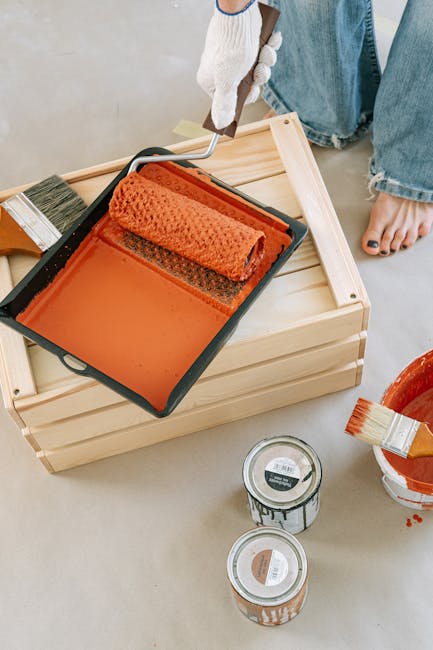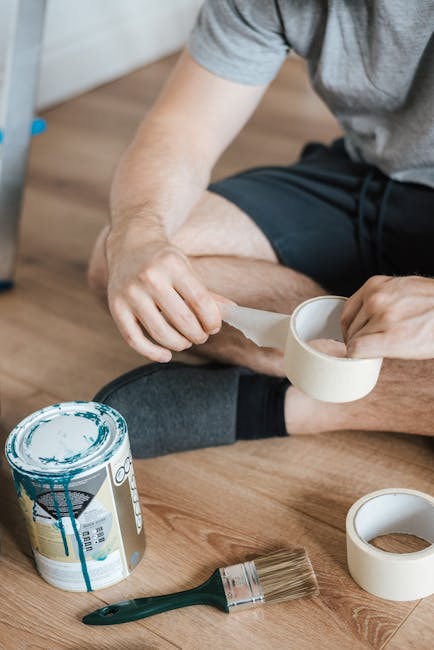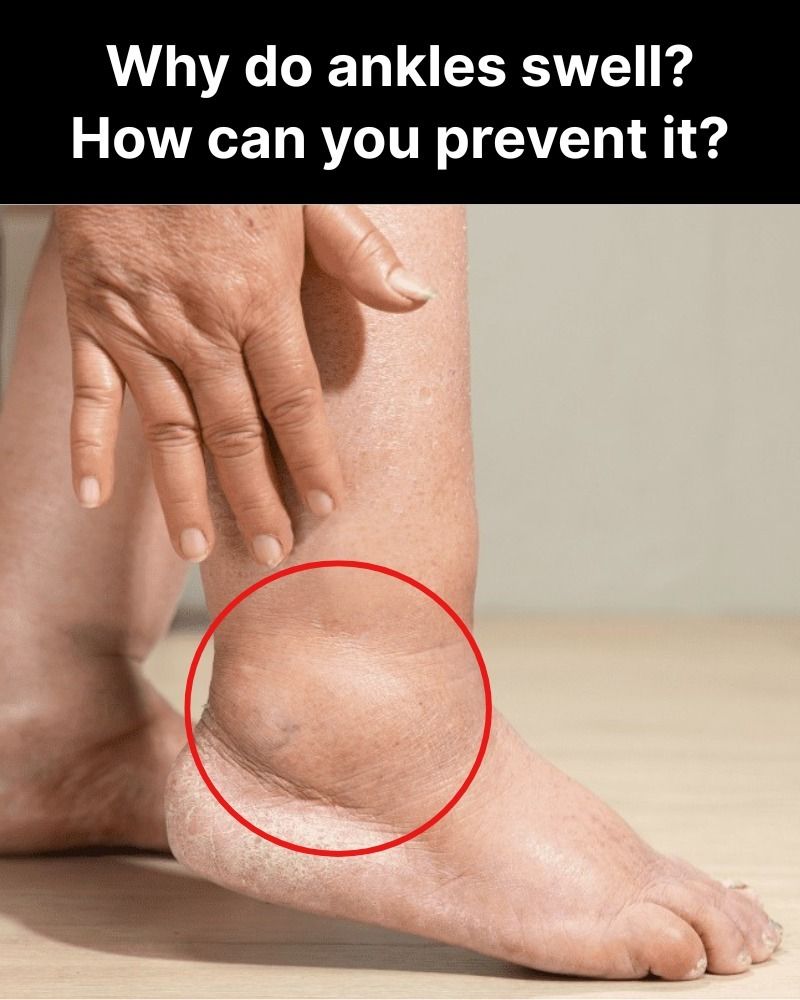Introduction
Ever notice your ankles looking a little puffy or feeling tight at the end of the day? Ankle swelling, also known as edema in the ankles, is a common issue that can affect people of all ages. While it’s often harmless and temporary, understanding why it happens and how to prevent it can save you discomfort and potentially signal a more serious underlying condition. Let’s dive into the reasons behind swollen ankles and practical tips to keep them happy and healthy.
 An image showing an ankle with mild swelling compared to a normal ankle.
An image showing an ankle with mild swelling compared to a normal ankle.
Main Body
Understanding Why Ankles Swell
Ankle swelling occurs when excess fluid builds up in the tissues surrounding your ankle joint. This fluid, often water, leaks from tiny blood vessels and gets trapped in the soft tissues of your legs and feet. Several factors can contribute to this fluid accumulation.
 A diagram illustrating the flow of blood and fluid in the lower legs, highlighting where fluid can leak and cause swelling.
A diagram illustrating the flow of blood and fluid in the lower legs, highlighting where fluid can leak and cause swelling.
Common Causes of Ankle Swelling
So, what are some of the most frequent culprits behind those puffy ankles?
- Prolonged Standing or Sitting: Gravity is the main offender here. When you’re on your feet (or in a chair) for extended periods, blood and fluid can pool in your lower extremities.
- Pregnancy: The growing uterus puts pressure on veins in the pelvis, slowing blood flow back to the heart. Hormonal changes during pregnancy also contribute to fluid retention.
- Dietary Factors: Consuming too much sodium (salt) causes your body to retain more water, which can lead to swelling.
- Medications: Certain medications, like blood pressure medications, antidepressants, and steroids, can have ankle swelling as a side effect.
- Injury: A sprain, strain, or fracture can cause inflammation and swelling in the ankle area as your body tries to heal itself.
- Underlying Medical Conditions: In some cases, swollen ankles can be a sign of a more serious health issue, such as heart failure, kidney disease, liver disease, or venous insufficiency (poor blood circulation in the legs).
 A collage showing different activities/scenarios that can lead to swollen ankles, like a pregnant woman sitting, someone standing for a long time, and a person eating salty snacks.
A collage showing different activities/scenarios that can lead to swollen ankles, like a pregnant woman sitting, someone standing for a long time, and a person eating salty snacks.
Recognizing the Symptoms of Ankle Swelling
Besides the obvious visible swelling, you might also experience other symptoms like:
- Tightness in the skin around your ankles
- Pain or discomfort when walking
- Difficulty fitting into your shoes
- Skin that appears stretched or shiny
- Pitting edema (a temporary indentation left on your skin after pressing on the swollen area)
 A close-up photo showing pitting edema – a finger pressing into swollen skin leaving a temporary indent.
A close-up photo showing pitting edema – a finger pressing into swollen skin leaving a temporary indent.
When to See a Doctor for Swollen Ankles
While mild, occasional ankle swelling is usually nothing to worry about, it’s important to seek medical attention if you experience any of the following:
- Sudden or severe swelling
- Swelling accompanied by pain, redness, or warmth
- Shortness of breath, chest pain, or dizziness
- Swelling that doesn’t improve with home remedies
- Swelling that occurs only on one leg
These symptoms could indicate a more serious underlying medical condition that requires prompt diagnosis and treatment. Always consult with a healthcare professional for any concerns.
 A doctor examining a patient’s swollen ankle.
A doctor examining a patient’s swollen ankle.
Practical Tips to Prevent Ankle Swelling
Fortunately, there are many steps you can take to reduce your risk of developing swollen ankles. Prevention is always better than cure!
Lifestyle Modifications
- Elevate Your Legs: Elevate your legs above your heart level for 30 minutes several times a day. This helps drain excess fluid.
- Stay Active: Regular exercise, such as walking, swimming, or cycling, improves circulation and helps prevent fluid buildup.
- Wear Compression Socks: Compression socks provide support to your veins and help improve blood flow.
- Maintain a Healthy Weight: Obesity increases the risk of ankle swelling.
- Limit Sodium Intake: Reduce your intake of salty foods, processed foods, and fast food.
- Stay Hydrated: Drink plenty of water throughout the day. Dehydration can actually worsen fluid retention.
 A series of images showing people engaging in preventative activities, such as elevating their legs, wearing compression socks, exercising, and drinking water.
A series of images showing people engaging in preventative activities, such as elevating their legs, wearing compression socks, exercising, and drinking water.
Dietary Considerations
Paying attention to your diet can significantly impact ankle swelling.
- Reduce Sodium: This is crucial! Read food labels carefully and choose low-sodium options.
- Increase Potassium: Potassium helps balance fluid levels in your body. Good sources include bananas, sweet potatoes, and spinach.
- Magnesium-Rich Foods: Magnesium deficiency can contribute to water retention. Include foods like almonds, avocados, and dark chocolate in your diet.
- Hydrating Foods: Watermelon, cucumbers, and berries are not only delicious but also help keep you hydrated.
 An appealing image featuring a variety of potassium and magnesium-rich foods, as well as hydrating fruits and vegetables.
An appealing image featuring a variety of potassium and magnesium-rich foods, as well as hydrating fruits and vegetables.
Additional Remedies
- Regular Exercise: Simple ankle exercises like ankle rotations and toe raises can improve circulation and reduce swelling.
- Magnesium Supplements: Talk to your doctor before starting any new supplements.
- Cold Compresses: Applying cold compresses to your ankles can help reduce inflammation and swelling.
 An infographic demonstrating simple ankle exercises with step-by-step instructions and images.
An infographic demonstrating simple ankle exercises with step-by-step instructions and images.
Conclusion
Swollen ankles are a common ailment, often caused by simple lifestyle factors. However, understanding the potential causes and adopting preventative measures can make a significant difference in your comfort and overall well-being. By elevating your legs, staying active, watching your diet, and recognizing when to seek medical advice, you can keep your ankles healthy and happy. So, pay attention to those lower extremities, and remember that proactive care is the key to preventing swollen ankles and enjoying a more comfortable, active life! If you’re concerned, always consult with a healthcare professional for personalized advice.
 A final image showing someone happily walking or enjoying an activity with healthy-looking ankles.
A final image showing someone happily walking or enjoying an activity with healthy-looking ankles.
